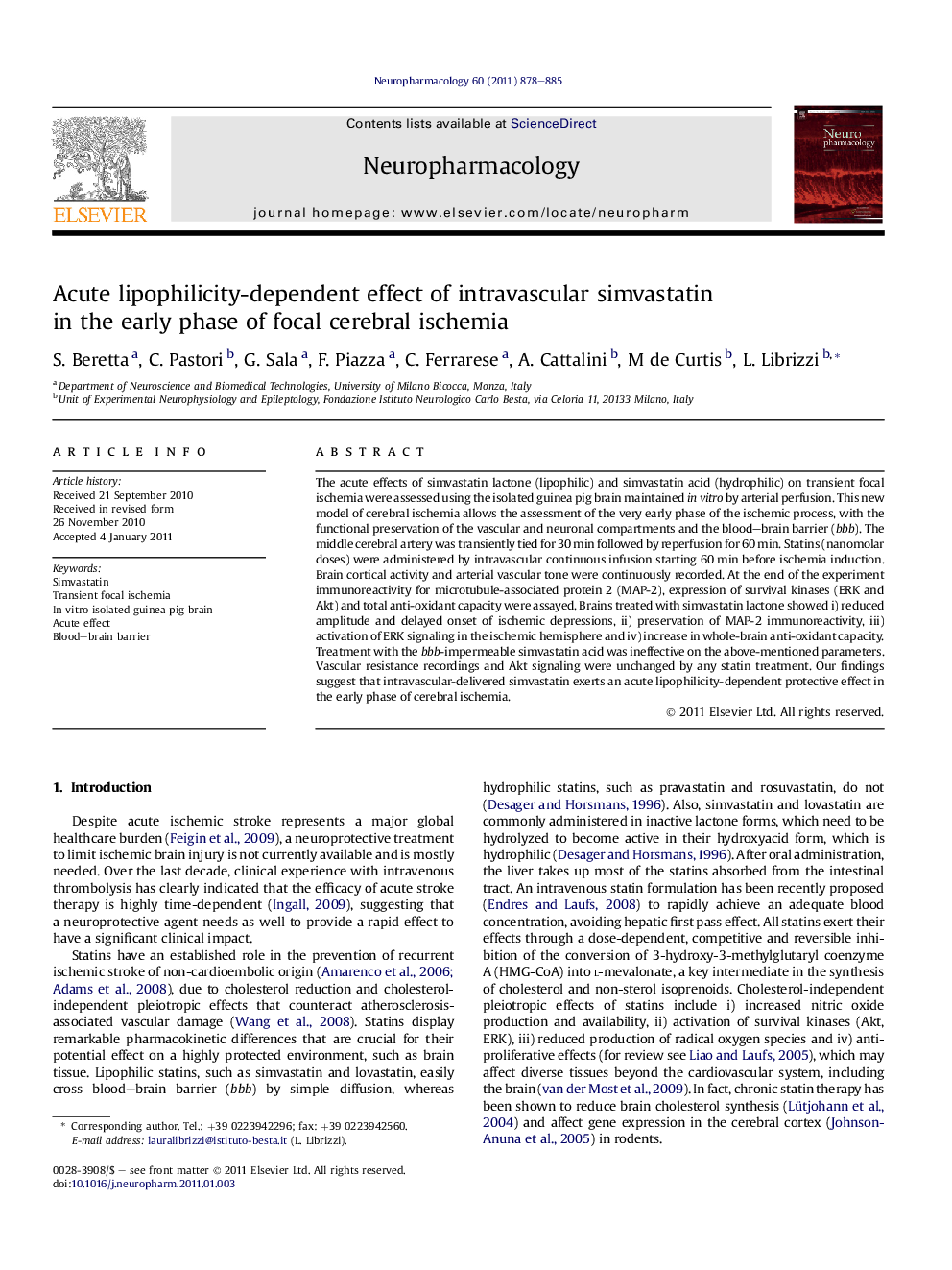| Article ID | Journal | Published Year | Pages | File Type |
|---|---|---|---|---|
| 2493975 | Neuropharmacology | 2011 | 8 Pages |
The acute effects of simvastatin lactone (lipophilic) and simvastatin acid (hydrophilic) on transient focal ischemia were assessed using the isolated guinea pig brain maintained in vitro by arterial perfusion. This new model of cerebral ischemia allows the assessment of the very early phase of the ischemic process, with the functional preservation of the vascular and neuronal compartments and the blood–brain barrier (bbb). The middle cerebral artery was transiently tied for 30 min followed by reperfusion for 60 min. Statins (nanomolar doses) were administered by intravascular continuous infusion starting 60 min before ischemia induction. Brain cortical activity and arterial vascular tone were continuously recorded. At the end of the experiment immunoreactivity for microtubule-associated protein 2 (MAP-2), expression of survival kinases (ERK and Akt) and total anti-oxidant capacity were assayed. Brains treated with simvastatin lactone showed i) reduced amplitude and delayed onset of ischemic depressions, ii) preservation of MAP-2 immunoreactivity, iii) activation of ERK signaling in the ischemic hemisphere and iv) increase in whole-brain anti-oxidant capacity. Treatment with the bbb-impermeable simvastatin acid was ineffective on the above-mentioned parameters. Vascular resistance recordings and Akt signaling were unchanged by any statin treatment. Our findings suggest that intravascular-delivered simvastatin exerts an acute lipophilicity-dependent protective effect in the early phase of cerebral ischemia.
► Intravascular simvastatin (nM dose) rapidly protects against focal brain ischemia. ► Simvastatin rapidly activates ERK and enhances endogenous anti-oxidant capacity. ► Acute protection by simvastatin was not due to cerebral vessel vasodilation. ► Acute protection by simvastatin requires the drug to enter brain tissue.
